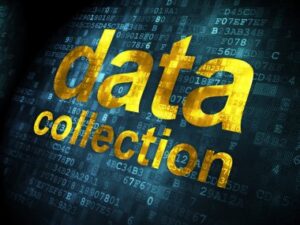Are there five common best data collection methods?

Are there five common best data collection methods? Data has proved to be important in every sector of the modern world ranging from research to business. Only through the presence of adequate data can proper analysis be carried out to understand the processes for which the data is collected. However, there are certain ways through which the information is collected. The article will focus on the various methods that are used for the collection of data. Also, it will list the top five methods that are applicable for data collection.
In any scientific or market research, data is considered an important aspect. If the data collected is not accurate, that will negatively impact the study’s results. Situations can also arrive where the acquired results can be invalid.
One of the most important requirements for data collection is to answer all the questions that are generated. Only then can quality information be extracted from the data, which will help in the decision-making process of any business, organization, or research.
Do you have to conduct research but do not know where to start? Does the thought of collecting data scare you? Well, data collection is not at all challenging. If you are sure about your topic, the collection procedure will be a piece of cake.
In this article, you will get 5 data collection methods without much hassle.
- Questionnaire and survey
- Interviews
- Focus Groups
- Direct Observations
- Document Review
That said, you must know that data collection is not difficult, but it requires you to follow a certain approach. Before getting to the nitty-gritty of the five vital methods, you must understand all about data collection. Read on to learn about the various types of data, collection, and more.
Data Collection

In simple terms, data collection refers to the collection of data. In another way, it can be defined as gathering information from different sources, analyzing it, and then offering solutions based on the data gathered. It is a systematic process that aims to search for all the available information related to a specific subject. The data collected is mainly in the form of primary data or secondary data. Primary data is collected by the user from first-hand sources, while secondary data is collected through third-party sources.
The collected data can be in the form of facts, images, events, or objects. In business, data collection in the form of customer reviews seems to be extremely valuable as it helps understand its customers, thereby meeting the customer’s expectations. Data can be collected at various points from different sets of audiences. Based on this data, the company can make informed decisions.
Data Collection Methods
Broadly data collection methods are classified into primary data collection and secondary data collection. The primary data collection is further divided into qualitative and quantitative data collection methods.
1. Qualitative data collection methods:
- In this data collection method, the quality of data is emphasized rather than the quantitative or the numerical aspects.
- The data is mostly based on the instincts of the researcher or their emotions.
- The type of data collection methods are primarily open-ended, and they are not structured. The researchers or the users are allowed to change the strategy for data collection at any moment.
- A lot of time is required in the qualitative data collection method. The researcher must carefully note down every detail through the help of notes, pictures, audios, or any other suitable forms.
- The qualitative methods mostly used for data collection are in-depth interviews, document reviews, online forms, web surveys, chats, and observation methods.
2. Quantitative data collection method
- As the name suggests, the quantitative data collection method involves using numbers rather than quality.
- Mostly a mathematical calculation is required to deduce the data.
- The different forms of data collection methods included in the quantitative method are interviewing, such as face-to-face interviews, telephonic interviews, computer-assisted personal interviewing (CAPI), and questionnaires, including the web-based and the paper-pencil modes.
Top 5 Ways of Collecting Data
Reports have stated various ways of data gathering. Below are a few ways through which data can be collected in the modern world:
1. Surveys
They are one way of data collection through which the customers can be directly asked for their information. Both qualitative and quantitative data can be collected through surveys. They mostly consist of a series of questions or queries related to a certain product or service. The customers need to answer these queries, mostly in the form of multiple-choice questions, or sometimes they demand an explanation in a few words. Researchers can conduct surveys in an online, offline manner or through telephonic interaction. However, the easiest way to conduct a survey is in the online mode. You just have to generate the survey and then share the survey link across social media or different websites or through email.
2. Monitoring social media
Nowadays, social media has become a trend, with so many users sharing their day-to-day lives in their feeds. This is the benefit of technology, where the internet plays a significant role in sharing information. Also, for collecting customer reviews, social media proves to be an important source.
By looking at the list of followers of a product or brand, the researcher can get an idea about what the customers commonly desire. This will help in understanding the target audience for a specific product. Also, people who love using certain brands will use the names of the brands in their profiles. Regular searching of the brand names will help in knowing which type of customers are using the products. Several tools are also available that aid in getting better insights from third-party analytics.
3. Online tracking
If the business or the organization has an app of its own or its website, it can act as a source for a lot of customer data. Technology has provided a lot of tools that will help in the collection of customer data. Even if a customer visits a particular website, data points are generated. When this data is reviewed, it helps the user know how many viewers have viewed or accessed the website. Also, along with this, the information of what tabs were clicked by the viewers and for how long they browsed the website, everything gets stored. All this type of information can be gathered, and then the data can be analyzed through proper analytics software.
4. Marketing analytics
In businesses, marketing campaigns help promote any product developed by the company. It has been reported that even though marketing campaigns, a lot of information can be collected on any webpage, email, or anywhere on the internet. The information related to which customers or viewers clicked on the marketing ad can be collected from the software used for placing the ad. It also provides information related to the time the customer viewed the ad and what device they used.
5. Registration and subscription data
Whenever a customer signs up for an organization’s email list, it automatically shares information about itself. Then, some basic information from the customers can be gathered, which can be further used for sharing relevant information with them.
Uses of Data Collection
Following are the reasons for which data collection is required:
- Through the way of data collection, the organization will be able to understand its customers more clearly. Knowing the customers provides a benefit for the organization, as it will know the customers’ expectations. Therefore, it will be able to meet their needs and expectations. It won’t be possible otherwise, as knowing every customer as an individual is not feasible. Moreover, when the organization is too large, it becomes difficult to know every customer. Data collection provides a solution in this respect as it helps businesses know who their customers are.
- The collection of data and its analysis helps the company know if it is doing well or requires any improvement. Also, through data analytics, the company will know if it has the chance of expanding its business. For example, transactional data will help the company know which products are mostly sold and not sold. This will help in the development of more similar products or improving the most sold products. Sometimes the data collected will show if there are any complaints from any customers. This will help in focusing on the improvement for a satisfactory delivery.
- Through the data collection and its analysis, future trends can be predicted. In turn, it will help the company prepare for future products beforehand. It is supposed while checking the data for websites that videos are watched more than the articles. In such cases, the company can focus on providing more content through videos rather than through articles.
- Data collection enables the business to get a clear idea of the demands and expectations of the customers. Based on the customer data, personalized products can be developed that will meet the customer’s needs. Also, in some cases, specialized messages can be created for a target audience.

Collecting customer data is key to almost any marketing strategy. Without data, you are marketing blindly, simply hoping to reach your target audience. Many companies collect data digitally, but don’t know how to leverage what they have.
Data collection allows you to store and analyze important information about current and potential customers. Collecting this information can also save businesses money by creating a customer database for future marketing and retargeting efforts. A “wide net” is no longer necessary to reach potential consumers within the target audience. We can focus marketing efforts and invest in those with the highest probability of sale.
Unlike in-person data collection, digital data collection allows for much larger samples and improves data reliability. It costs less and is faster than in-person data, and eliminates any potential bias or human error from the data collected.
